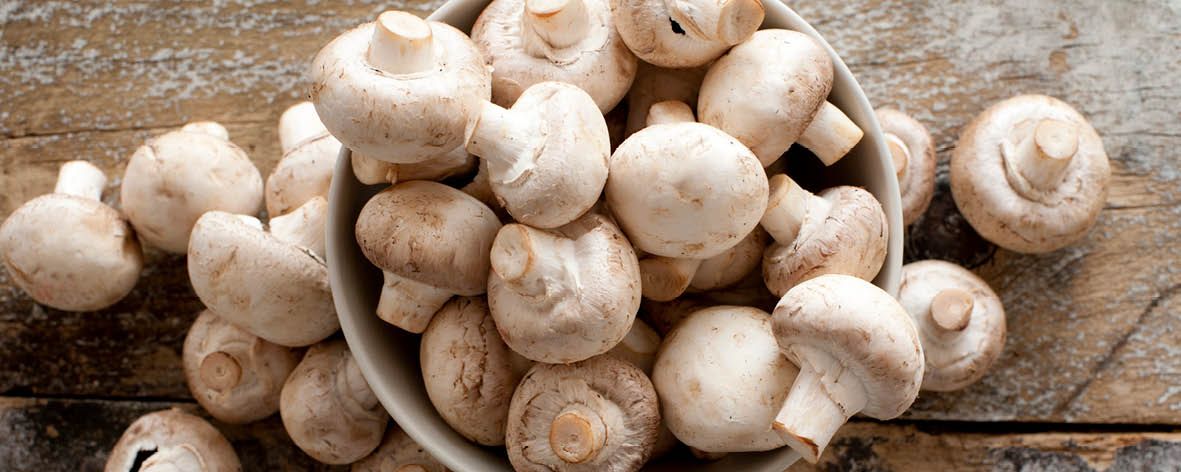All you need to know about … Button Mushrooms

Button Mushrooms or Agaricus bisporus if you want to be fancy and use their botanical name, are the youngest and generally smallest, of the white mushrooms. Most mushrooms produced in Australia are white button mushrooms, although there are an increasing number of exotic mushrooms being grown. Their name comes from their shape rather than their size with the cap of the button mushroom tightly closed around the stem. They have a delicate texture and mild flavour that intensifies when cooked and they are perfect for all sorts of dishes.
Mushrooms contain a range of valuable antioxidants and have been shown to be one of the highest antioxidant foods available. In a study of 30 common vegetables, mushrooms were placed in the top five for highest antioxidant capacity. Mushrooms also contain antioxidant vitamins including B group vitamins and minerals such as riboflavin, copper and selenium, and polyphenols. They are the only non-animal food source of vitamin B12, plus mushrooms exposed to sunlight naturally generate vitamin D, which is important for healthy bones and teeth and keeping our immune system strong.
The unique flavour in mushrooms is known as umami. It’s the natural glutamates that give mushrooms their deliciously rich, savoury flavour and makes them a favourite with meat eaters and vegetarians alike. One of the benefits of foods containing glutamate is that when they are added to meals, the salt content can be reduced by 30-40% without affecting the taste. That means when you add mushrooms to a meal, you can cook with no salt or add less salt. Mushrooms are gluten free and have a low glycaemic index, making them a great addition to your diet.
When selecting mushrooms they should be firm to the touch and have a uniform colour. Store them in a brown paper bag on the bottom shelf of your fridge and they will last for at least one week. Don’t worry about peeling mushrooms, much of the goodness and flavour is in the skin. Instead, gently wipe with a damp cloth to remove any dirt from the surface and trim the stalk. Never soak mushrooms in water to clean them as the mushrooms will absorb the water and become spongy.

